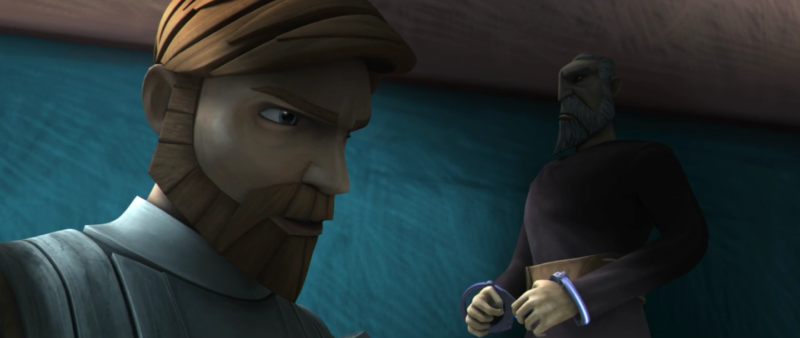THE CINEMATOGRAPHY OF OBI-WAN KENOBI: Sassy Jedi Always Caught in the Middle
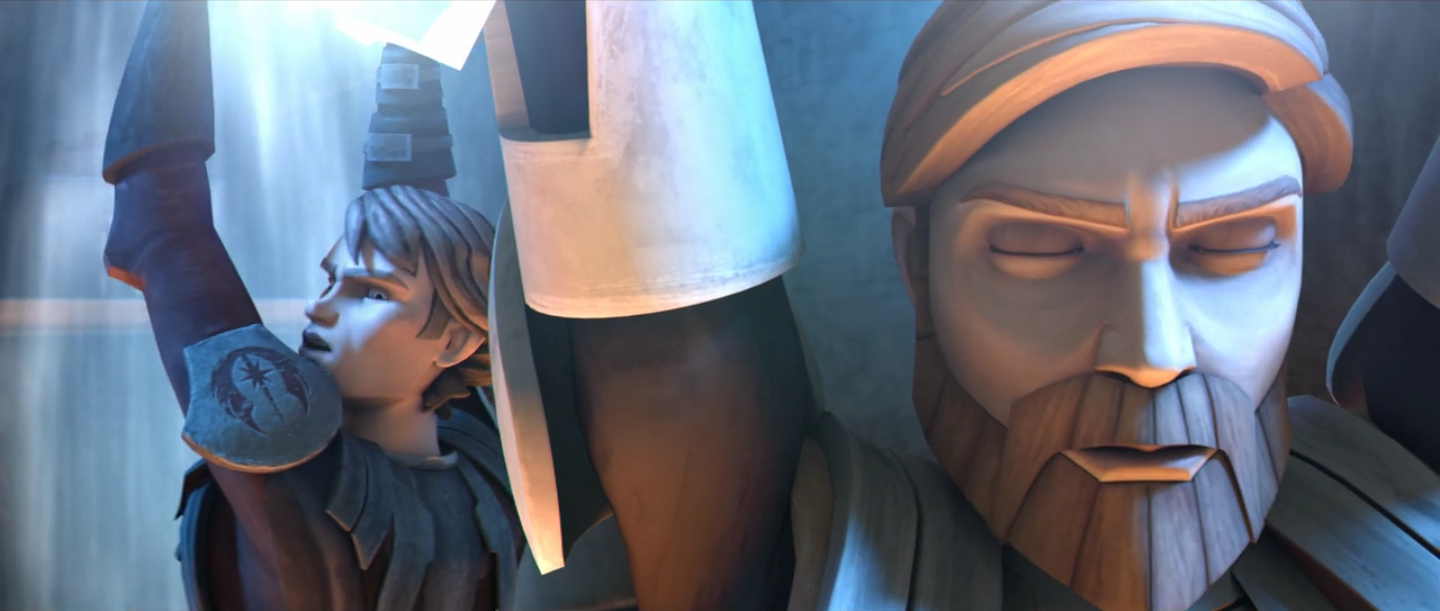
I haven’t written one of these in ages. I’m in the mood to analyze, so here’s a cinematography analysis of “The Gungan General” from The Clone Wars, season 1.
MAN LITERALLY IN THE MIDDLE
One of the first things I noticed about this episode is that Obi-Wan is always in the middle, literally between Anakin and Dooku, but he’s also often in the very center of the frame.
Side Note: the bickering in this episode never gets old.
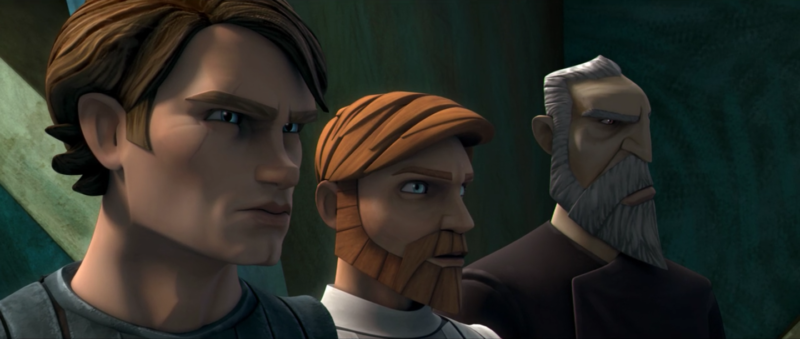
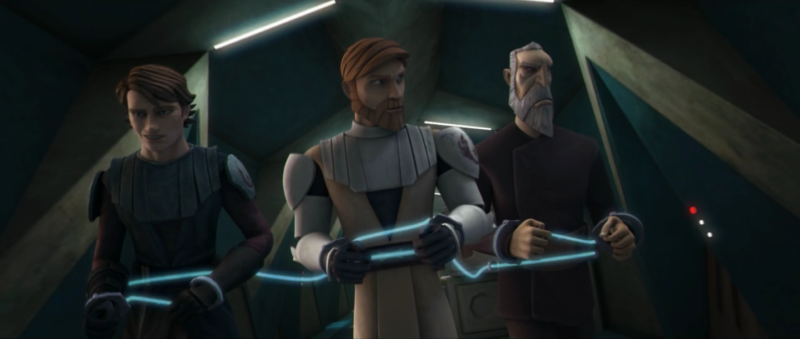
In at least one of the scenes, the frame actually pivots around the 3 characters, always keeping Kenobi as the central point:
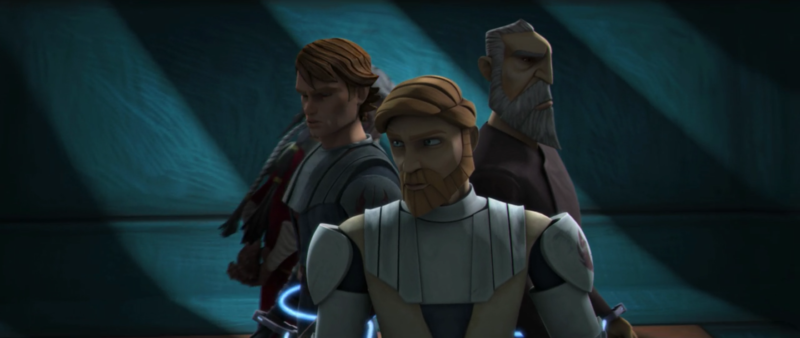
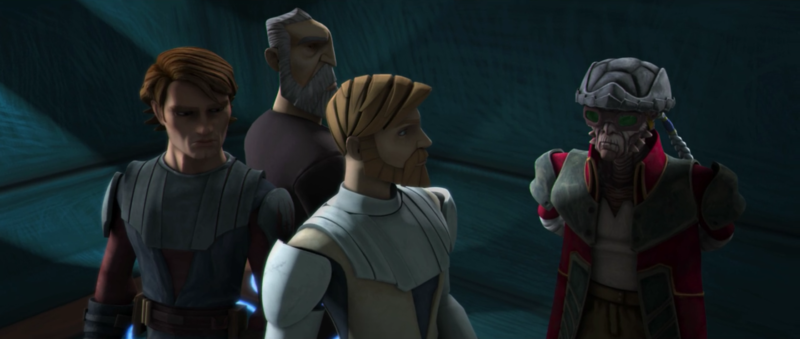
Why is this significant? Kenobi’s position is subconsciously communicating to the audience that he is balanced, centered, and reliable. Obi-Wan is the least likely to overreact and he is doing his best to maintain peace between Dooku and Anakin. His position is deliberately chosen by the filmmakers.
LIGHT SIDE VS DARK SIDE CODING
This episode has some great cinematic references to each character’s morality. Here’s how to read it:
1. RIGHT vs LEFT
When Anakin and Obi-Wan are in a shot together, Skywalker is almost always on the left and Kenobi is almost always on the right.
(Even look at the images above ^)
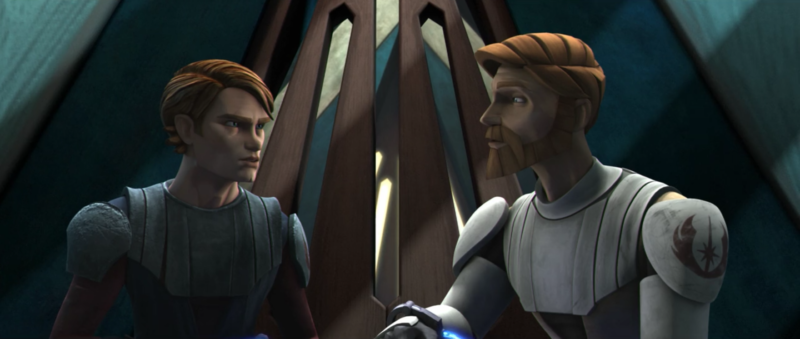
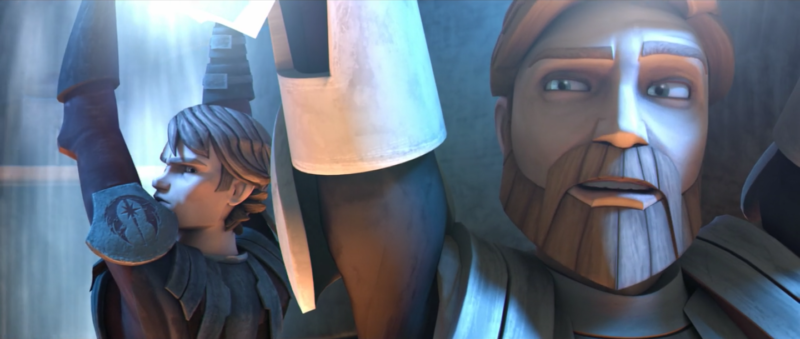
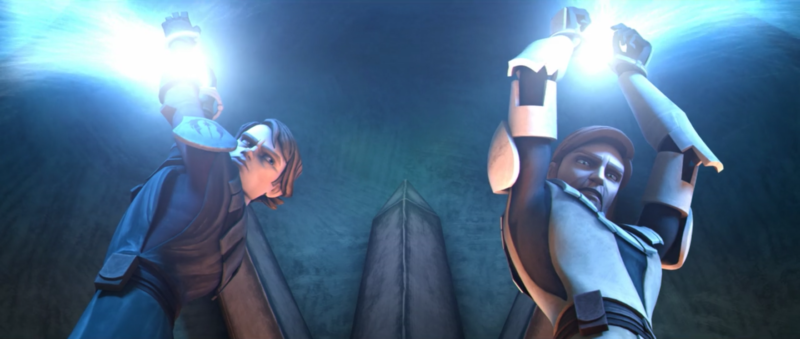
Why does that matter? In Western culture we are taught from a young age to read left to right. It seems like a small thing, but in truth, that simple lesson creates a subconscious code in our brains to feel comfortable with motion that moves left to right.
In cinematography, when a camera pans left to right it indicates a balanced, comfortable transition. If the camera pans right to left, it implies discomfort or that something bad is about to happen.
When a character is on the right, they are usually the calmer, more centered character. When a character is on the left, they are usually prone to moodiness and are sometimes challenging.
So if Obi-Wan is constantly on the right or in the center, then it is significant when he is not in that position.
2. FRAMING
I love this image (it’s not that beautiful, but it’s full of symbolism):
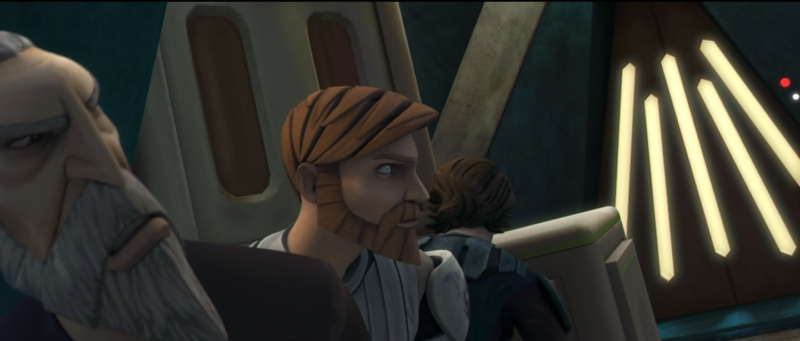
Framing, and the character’s position within the frame, is important when looking at a character’s emotional state. As discussed already, Kenobi is in the middle of the shot, and he’s facing right (which we’ve also just learned implies he’s stable and ready for anything).
Dooku’s face is smashed up against the left side of the frame; part of his face is even cut off and he’s twisting back around to look at Obi-Wan. He’s also claustrophobically forward in the frame, larger than everyone else, and right in the audience’s face. When a character is pushed up against the left side of the frame, it means they literally have nowhere to go, like they are up against a difficult barrier. It’s a very effective way to show a character is boxed in by both their literal surroundings, but also by their emotions. Dooku has had it up to here with these Jedi.
Now look at Anakin. He’s centered with Obi-Wan but his back is to us. Why would the filmmakers choose this? Because we all know Anakin turns into Darth Vader, so he is constantly being coded as changeable, uncomfortable, turning his back. This doesn’t mean that he’s a bad person; what it’s really doing is laying the subconscious foundation for us. We all know Anakin eventually turns to the Dark Side and that is why his cinematic code is much darker than Obi-Wan’s.
And this all plays into the last piece:
3. LIGHTING
This is pretty strait forward. Obviously, people in shadow are “evil” or are undergoing inner turmoil or are angry. People in the light are “not evil,” they’re happy, balanced, etc.
Take a look at this image:
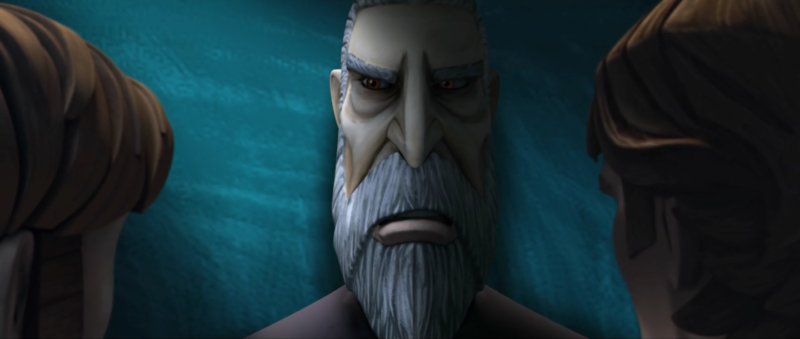
Dooku is split, half shadow, half light. And which Jedi is standing on the lighter side? Obi-Wan. Which Jedi is on the shadow side? Anakin. Deliberate? Absolutely.
All right, friends! That was fun… sort of. I feel like I’m back in school 🙂
So, considering all the things we’ve talked about in this stupidly long post, what is this image telling you:
